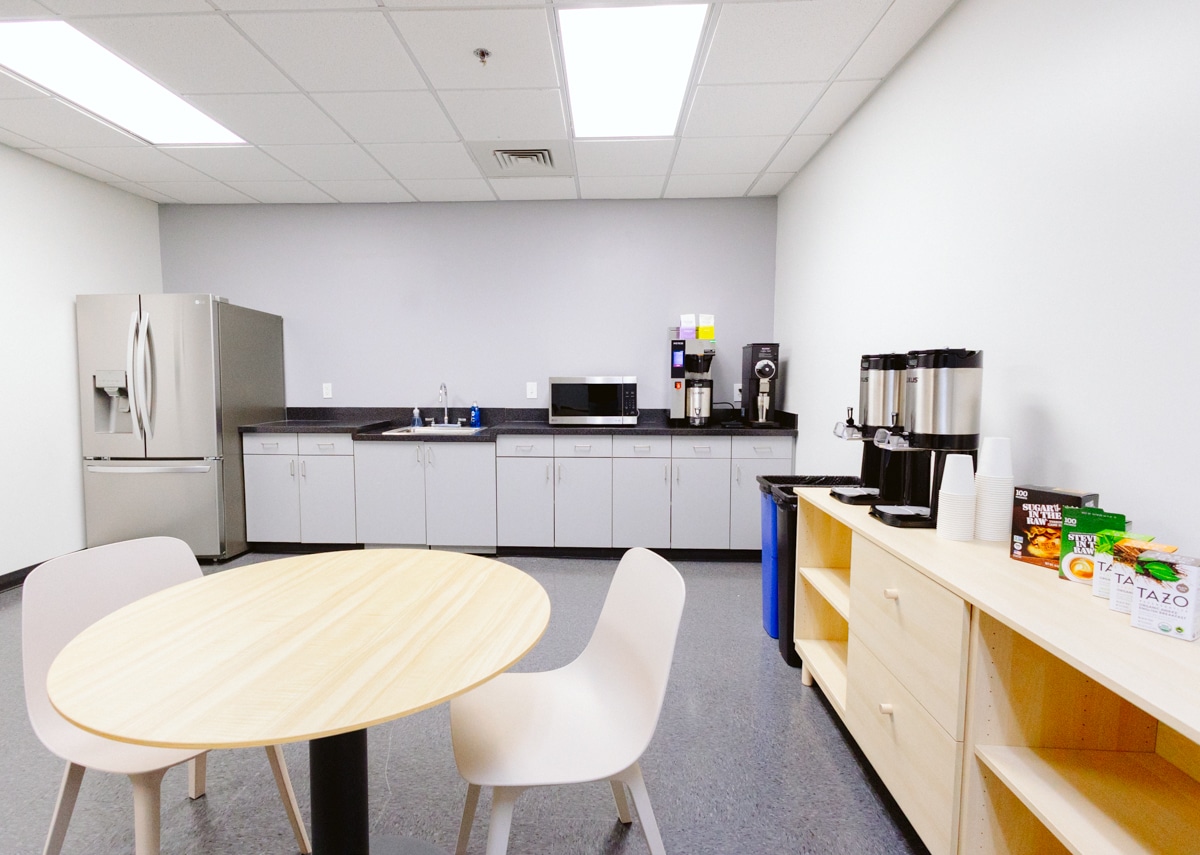Comparisons, Ecommerce, Industrial Spaces, Leasing Options • 9 Minute Read • Dec 16, 2024
What to Look for in a Production Warehouse

A production warehouse can improve the speed and efficiency of your supply chain. This, in turn, improves customer satisfaction and retention. It’s in every growing business’ best interest to expand to a bigger space when the time comes.
Yet, finding the right warehouse that balances cost with flexibility and efficiency can be tricky. The growth of ecommerce over the last twenty years has increased the supply and demand of warehouse space.
When looking for a production warehouse, consider the location, size, layout, infrastructure, technology, cost, and additional amenities
What is a production warehouse?
A production warehouse is an area that’s used to store the goods required for manufacturing operations. This can include raw materials, production parts, components of products, or semi-finished and finished products.
These warehouses sometimes also houses the production line or production center to achieve consistent, reliable manufacturing. This is often the case with small to medium sized businesses, as housing all of your production line in one place can save money.
A production warehouse is also sometimes known as a manufacturing warehouse.
What are the factors when choosing a warehouse?
When choosing a warehouse, there are a variety of factors that you should consider including location, size, layout, infrastructure, technology, cost, and additional amenities.
By weighing each of these factors, you can improve order fulfillment and customer satisfaction.
Picking the Right Location for Your Production Warehouse
Proximity to Suppliers and Markets
If you’re waiting longer for the materials and items you need to create a product, your customers will wait longer, too.
Being close to your suppliers and customers reduces shipping costs and lead times. It can also improve your customer experience and retention. One survey recently found that 44% of customers want to wait less than two days for their packages to arrive.
Before signing a contract on a warehouse, check transportation costs from the warehouse to the common areas of your customers.
Accessibility
Consider the transportation infrastructure surrounding the warehouse, including highways, ports, and airports.
Are there local traffic patterns that could cause logistical bottlenecks?
Are the roads in good condition and safe?
Is there proper signage for truck drivers to find you?
While avoiding traffic all together isn’t a possibility, taking into account especially difficult roads or transportation networks could help you avoid a production warehouse that’s more of a headache than a help.
Local Workforce
You may have found your dream warehouse, but the workforce could make you turn on your heels and run. When it comes to your organization’s production line, is the workforce skilled enough to create your products?
Also, if you plan to expand and hire help, what will you do if you can’t afford the labor costs in the surrounding area? These are important factors to consider when picking a production warehouse for your organization.
Zoning and Regulations
There are rules and regulations that vary by state and city. Before falling in love with a warehouse, make sure it’s zoned and in an area that complies with local zoning laws.
Make a list of all the areas in your city where you know you can’t set up a production warehouse if you’re in an industry that has to adhere to strict zoning restrictions.
Size and Layout Considerations
Adequate Space
If you’re hoping to create a new production warehouse, you need adequate space. First, consider if you’re just going to store items, or if you’re also going to set up your production line. If you’re setting up a complex production line, you may need more space.
Assess your current and future space requirements based on production volumes. You’ll also want to consider the space needed for storage, machinery, employee amenities, and office areas.
Door size may also play a role in picking out an ideal warehouse based on how you receive materials and ship your products.
Scalability
Moving is expensive. If you’re hoping to grow your business, look for a space that allows you to expand. You can either book a warehouse that’s bigger than you need today, or you can consider co-warehousing, which can allow you to expand when your business is ready.
Efficient Workflow Design
An efficient workflow design in a production warehouse minimizes movement and increases productivity. How can you design your warehouse space to make things as easy and fast as possible for you and your team?
Consider what areas you want for receiving, production, quality control, and shipping. Then take into account how many people will be working shoulder-to-shoulder in your warehouse during production.
For a small warehouse space, many organizations use a U-shape design to optimize their wall space.
Ideal Infrastructure and Utilities for Your Production Warehouse
Building Condition
A worn out warehouse could leave you plugging leaks in the ceiling, bundling up due to drafts, or fighting off pests to keep them from damaging your products. The physical shape of a warehouse matters. Inspect the structural integrity of the building, including the roof, walls and flooring.
Check for any signs of wear, damage, or hazards. There shouldn’t be puddles, giant cracks, animal droppings, or excessive dirt in a well-maintained warehouse.
Power Supply
Many warehouses vary in their power supply. This is very important for some industries, and less important in others. Get clear on what kind of equipment you need today, and what equipment you’ll potentially need in the future, as well as the equipment’s power requirement. Confirm that the production warehouse you’re interested in working out of has the right power supply.
You may also want to consider backup power options in case of outages, especially if the warehouse doesn’t have a backup generator.
Technology and Automation
Inventory Management Systems
Does the warehouse you’re considering have a warehouse management system (WMS) for inventory and logistics? Not all warehouses will, but some do. If this is something that comes with the warehouse, it may already be rolled into the price and could save you money.
Or, your production warehouse could have an integration with existing enterprise resource planning (ERP) systems. This will automate different activities in order fulfillment like collecting purchase orders, tracking shipments, managing inventory items, packaging, labeling products at workstations, delivering goods to customers
While warehouse established WMS and ERPs are nice to have. But, often this level of automation is only available if renting a larger, more traditional warehouse.
Small and medium businesses should consider these sustainable inventory management tips.
Security Systems
Whether you sell an expensive product or the equipment you use is expensive, the last thing you want is to be a victim of theft in your own warehouse. Consider what security measures are currently in place when taking tours.
This could include surveillance cameras, access controls, alarm systems, fences, keypads, and on-site management. This can also help you achieve safety and compliance laws depending on the types of products you sell.

Cost Considerations When Renting a Production Warehouse
Rent and Contract Terms
The more flexible the terms of your contract when signing up for a warehouse space, the better. Ideally, you can rent month to month as you expand your business. This could help you mitigate risk and scale back if needed. Or, if you’re sure your business is ready for this step, you can sign a longer contract and save money on the overall rent.
Make sure you inquire about utility costs, maintenance expenses, and take note of any other operational expenditures. It can also be wise to set aside some cash for unexpected expenses – just in case.
COVID illuminated how fragile our supply chain is. Flexibility with your warehouse agreement can be invaluable, especially for small to medium business owners who don’t have financial backing yet.
Value for Money
Your production warehouse should be a strategic step forward, not a step backwards for your business. Which means, you need to balance the value provided from the production warehouse with the overall cost of the space.
You likely don’t need everything on your dream warehouse list when you first expand. Yet, it’s important not to compromise on essential features that will make your organization faster and more efficient.
Additional Services and Amenities for Production Warehouses
Company Amenities
Finding a warehouse with 3PL support or a co-warehouse are two ways to increase the company amenities you have access to.
3PL support is a 3rd party logistic warehouse, where another organization oversees all warehouse operations on behalf of your company. These are utilized most often by well established businesses that move a lot of products.
Co-warehouses, on the other hand, are ideal for small to medium businesses looking to sustainably grow. They offer flexible contracts, allowing businesses to expand as needed. Co-warehouses also have equipment for warehousing and shipping, allowing you to focus on investing in production equipment.
There’s on-site management, wifi, carrier pickups, and mail and package handling. You’ll also have access to conference rooms and offices that you can book as needed.
Employee Amenities
Attracting the right employees can make or break your business. So, having employee amenities, like easy parking, a break room and a community can make a big difference. This is another reason to consider a co-warehouse.
Creating these community spaces, or even just restocking the coffee, won’t fall squarely on your shoulders. Instead, the management team of the co-warehouse will help you take care of your people.

Go Find Your Production Warehouse
Choosing the right production warehouse is a critical decision that can impact the efficiency, cost-effectiveness, and overall success of your business operations. By considering factors such as location, size, layout, infrastructure, technology, and cost, you can find a warehouse that meets your specific needs and supports your growth objectives.
Are you looking for a production warehouse in Atlanta? Consider taking a tour of Shift, the ideal co-warehousing space for small to medium sized businesses.
We’d love to show you our facilities and learn about your brand.



